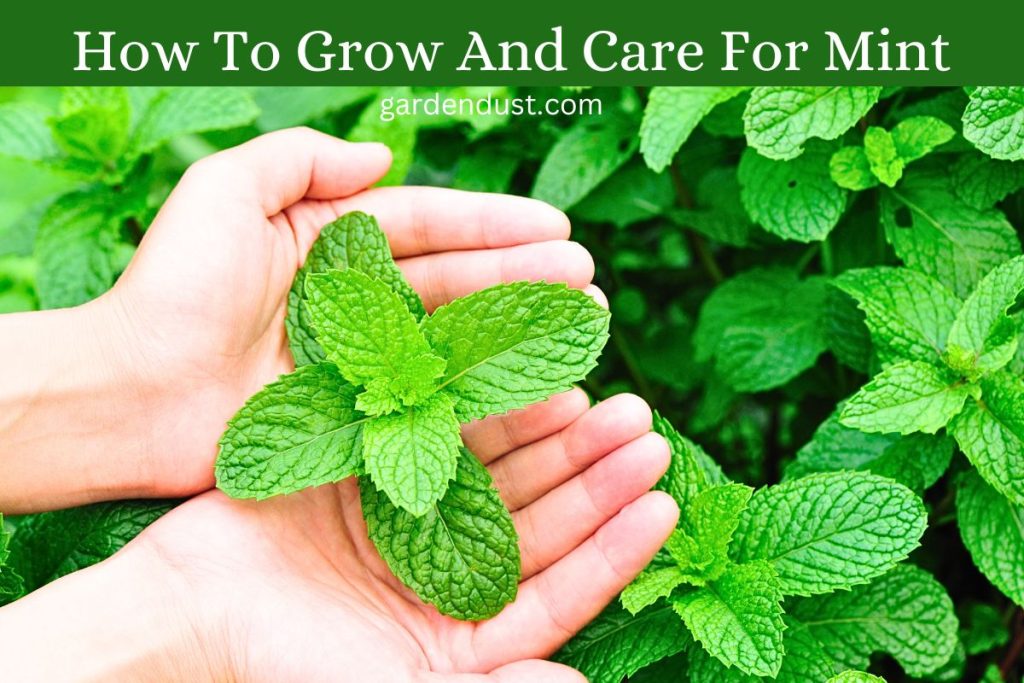Mint, with its refreshing aroma and versatile uses, is a popular herb that can be easily grown in your garden or even in a small pot indoors. Whether you want to add a fresh touch to your culinary creations or enjoy the numerous health benefits of mint, cultivating this herb is a rewarding endeavor. In this comprehensive guide, we will walk you through the step-by-step process of how to grow and care for mint. By the end, you’ll be ready to cultivate this aromatic herb with confidence. Let’s start…
Native– Europe, Asia, and North America.
Family-Lamiaceae
Botanical Name: The botanical name for mint varies depending on the specific species and variety. Some common species include:
- Peppermint (Mentha × piperita)
- Spearmint (Mentha spicata)
- Chocolate Mint (Mentha × piperita ‘Chocolate’)
- Apple Mint (Mentha suaveolens)
- Orange Mint (Mentha × piperita ‘Citrata’)
READ ASLO:-How To Grow And Care For Purple Coneflower
Selecting the Right Mint Variety
Before you start growing mint, it’s essential to choose the right variety. Mint comes in numerous types, each with its unique flavor profile and characteristics. Here are some popular mint varieties to consider:
- Peppermint: Known for its intense, cooling flavor, peppermint is a favorite for teas, desserts, and savory dishes.
- Spearmint: This variety has a milder flavor, making it suitable for garnishes, salads, and mint juleps.
- Chocolate Mint: With a delightful hint of chocolate, this mint variety is excellent for desserts and beverages.
- Orange Mint: Known for its citrusy aroma, orange mint adds a unique twist to your culinary creations.
- Mojito Mint: Perfect for crafting the famous Cuban cocktail, mojito mint has a refreshing and slightly spicy flavor.
Once you’ve decided on a variety that suits your taste, it’s time to move on to the next steps in the growing process.
Planting Mint
Mint is a hardy herb that can thrive in various conditions, but it prefers partial to full sunlight. Here’s how to plant mint successfully:
- Choose the Right Location: Select a well-drained area with good sunlight exposure. If you’re growing mint indoors, place it near a sunny window.
- Prepare the Soil: Mint prefers slightly acidic to neutral soil with good organic content. Amend the soil with compost to improve its texture and fertility.
- Container or Ground: You can grow mint in the ground or in containers. Containers are an excellent option if you want to control its spread.
- Watering: Keep the soil consistently moist but not waterlogged. Mint appreciates regular, even watering.
Mint Care and Maintenance
Mint is relatively low-maintenance, but it does require some care to thrive:
- Pruning: Regularly trim the mint to encourage bushier growth and prevent it from becoming too leggy. Pinch off the tips of the stems to promote branching.
- Fertilization: Mint doesn’t require heavy feeding. Applying a balanced, all-purpose fertilizer once a month during the growing season should suffice.
- Weeding: Keep the area around your mint plants weed-free to prevent competition for nutrients and water.
- Mulching: Apply a layer of organic mulch, such as straw or compost, around your mint to help retain moisture and deter weeds.
- Pest and Disease Control: Mint is relatively resistant to pests and diseases, but you should still keep an eye out for issues like aphids or powdery mildew. Treat problems promptly with organic solutions if necessary.
Harvesting Mint
The best part of growing mint is the harvest! You can start harvesting when the plant reaches about 6 inches in height, typically a few weeks after planting. Here’s how to do it:
- Harvesting Leaves: Use scissors or your fingers to snip off the leaves you need. It’s best to pick the leaves in the morning when the oils are most concentrated.
- Harvesting Sprigs: If you want whole sprigs of mint, cut them just above a pair of leaves. This encourages bushier growth.
- Continuous Harvest: Mint is a prolific grower, so you can continue to harvest throughout the growing season. However, avoid cutting more than one-third of the plant at once to ensure it remains healthy.
Propagation of Mint
Stem Cuttings:
- Select healthy mint plant.
- Take 4-6 inch cuttings from stem tips.
- Remove lower leaves, leaving a few at the top.
- Optional: Dip in rooting hormone.
- Plant in well-draining medium.
- Space cuttings apart, water thoroughly.
- Cover with plastic to create humidity.
- Place in bright, indirect light.
- Roots in 2-4 weeks; transplant when ready.
Division:
- Divide in spring during new growth.
- Gently lift entire plant.
- Separate into sections with roots and stems.
- Replant at original depth.
- Water generously after planting.
Seeds:
- Buy mint seeds.
- Start indoors 8-10 weeks before last frost.
- Plant in seed trays or pots with seed mix.
- Sow seeds 1/4 inch deep, lightly press.
- Keep soil consistently moist.
- Provide ample light for germination.
- Transplant seedlings when several inches tall.
- Space in the garden 18-24 inches apart.
- Maintain regular moisture and watch for pests/disease.
Growing mint is an enjoyable and rewarding experience that adds freshness to your culinary endeavors and a delightful fragrance to your garden. By selecting the right mint variety, planting it in the proper location, providing regular care, and harvesting thoughtfully, you can enjoy a bountiful supply of mint for years to come. Whether you’re making mint-infused beverages, adding a zing to your dishes, or simply enjoying the aroma, your homegrown mint will elevate your culinary and gardening pursuits. So, roll up your sleeves, follow our guide, and get ready to savor the benefits of cultivating this versatile herb. Happy Gardening…







